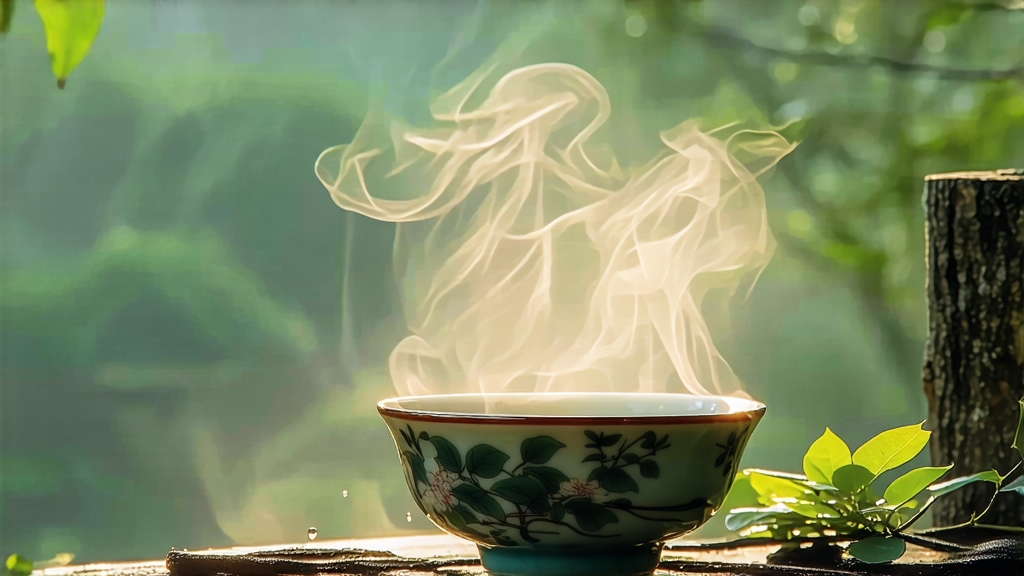
Alishan High-Mountain Oolong, known in Taiwan as “Alishan Qing Xiang Oolong,” is the island’s most celebrated gift to the global tea stage. Grown between 1,000 and 1,400 meters in the cloud-forested Alishan Range, this tea absorbs the chill of perpetual mist, the sweetness of morning sun filtered through cedar and cypress, and the mineral breath of ancient sandstone. The result is a liquor that tastes like drinking velvet sunrise: orchid bouquet, ripe honeydew, and a cooling alpine finish that lingers like distant temple bells.
History
Oolong cultivars arrived in Taiwan during the mid-19th century when Fujianese immigrants carried Qing Xin (Green Heart) seedlings across the strait. Alishan itself remained a logging frontier until the 1970s, when rising wage costs pushed tea farmers upslope in search of cooler climates that slow leaf growth and intensify flavor. By 1985, Alishan High-Mountain Oolong had outpriced Tie Guan Yin in Taipei auction houses, cementing its reputation as the “Champagne of Taiwanese teas.” Today, indigenous Tsou tribespeople manage many gardens, blending ancestral land stewardship with modern agronomy.
Terroir & Harvest
Alishan’s diurnal swing can exceed 15 °C. At dawn, fog acts as a natural shade cloth, increasing chlorophyll and amino acids; at midday, strong UV triggers terpene production, creating the signature alpine aroma. Only the apical two leaves and a bud are plucked by hand between late March and early May, then again in late October, when the equinox mist is thickest. A skilled picker can finish just four kilograms of fresh leaf in a day—enough for barely one kilogram of finished tea.
Crafting the Leaf
- Solar Withering: Leaves are spread on bamboo trays under filtered sunlight for 20–30 minutes, initiating enzymatic oxidation.
- Indoor Withering & Tossing: The leaf is then moved indoors, where it is gently tossed every hour for 6–8 hours. This bruises the edges, encouraging partial oxidation (20–30 %), the hallmark of oolong.
- Fixation: A short 3-minute pass through a 260 °C drum halts oxidation, locking in a jade-green center and bronze rim.
- Rolling: The warm leaf is wrapped in cotton cloth and rolled under mechanical pressure, shaping it into the characteristic半球形 (half-ball) pellet that unfurls like a tiny green peony during brewing.
- Drying & Sorting: Low-temperature dryers reduce moisture to 3 %. Stems and yellow leaves are removed by hand and wind-sorting machines.
- Charcoal Finish (optional): Premium lots receive a final 4-hour bake over longan-wood charcoal at 80 °C, adding toasted cassia and caramel notes without masking the high-mountain florals.
Grades & Styles
- Qing Xiang (Light Roast): Vacuum-packed within 48 hours to preserve bright lily and snap-pea notes; best consumed within 18 months.
- Zhong Roast (Medium): Re-baked monthly for three months, yielding honeyed banana and nutmeg; ages gracefully for 3–5 years.
- Aged Alishan: Stored in clay jars for 10-plus years, re-roasted annually; develops prune, sandalwood, and a throat-cooling menthol.
Water & Ware
Water should be mountain-soft (TDS 30–60 ppm) and freshly drawn. Porcelain gaiwan or a 120 ml zhuni clay teapot accentuates aromatics; glass is acceptable for display but cools too quickly. Rinse all ware with 95 °C water to pre-heat.
Leaf Ratio
Use 1 g of leaf per 15 ml of vessel capacity—about 6 g for a standard gaiwan. The tightly rolled pellets may look sparse at first, but they expand to fill the vessel by the third infusion.
Temperature & Timing
- Infusion 1: 95 °C, 55 s. The liquor glows pale chartreuse; aroma is fresh orchid and rain-soaked bamboo.
- Infusion 2: 92 °C, 45 s. Honeyed cream appears; texture thickens.
- Infusion 3–5: 90 °C, add 10 s each steep. Tropical fruits emerge—pineapple core, lychee.
- Infusion 6–8: 88